Growing up, I remember my Granny always had aloe vera growing in the yard. These plants were treated like a precious commodity and she tended to them with love and care to ensure that they produced thick and healthy succulent leaves.
At home, it was used as a healing salve, on inflamed or sunburned skin, to bring boils to a ‘head’ and I also remember my aunty using it as a mask on her face and eating pieces of it ever so often for internal cleansing. Today, it still is a part of the beauty regimen of many women in my family.
Aloe vera has so many beneficial properties. It is packed with numerous vitamins, minerals, enzymes and more!
It is antiseptic, anti-inflammatory, moisturizing, helps to regenerate collagen, and also has anti-aging benefits.
The cucumber juice in this recipe combines well with the aloe to create a cool, soothing yet refreshing soap that is moisturizing and gentle on skin.
I used the Cucumber Melon fragrance oil from Nurture Soap to scent this batch but feel free to use any fragrance or essential oil you like or simply leave it unscented.
This recipe yields approximately two pounds of soap and fits perfectly into my 10″ silicone loaf mold.
Ingredients
- 8 oz Coconut oil
- 12 oz Olive oil
- 8 oz Palm oil
- 2 oz Castor oil
- 2 oz Shea butter
- 2 oz Cocoa butter
- 4.75 oz Sodium Hydroxide (lye)
- 8 oz Distilled water
- 1 oz Fragrance or essential oil
- 2 oz Cucumber juice
- 2 oz Aloe Vera juice
If you have never made soap before, see my post on Soapmaking for Beginners as well as Equipment to Make Soaps at Home.
Also, if you would like to learn more about making all-natural soaps I highly recommend the Natural Soapmaking Ebook Collection from Jan Berry, The Nerdy Farmwife.
Directions to Make Aloe Vera and Cucumber Soap
Always follow safety precautions when working with lye – put on safety goggles, long sleeves, and gloves and ensure that there are no children or pets in your production area.
Prepare the Lye Water.
Note: The water in this recipe has been discounted to accommodate the fluid from the aloe and cucumber juice.
Weigh the water in a stainless steel or heat-resistant container.
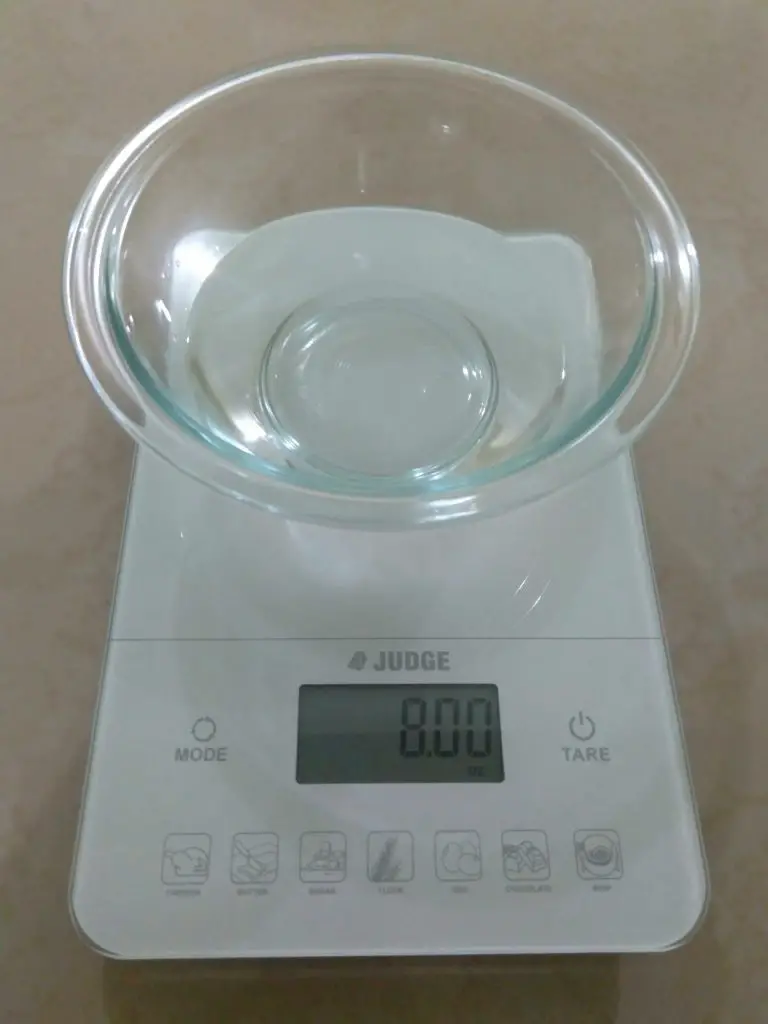
In another container, weigh the sodium hydroxide.
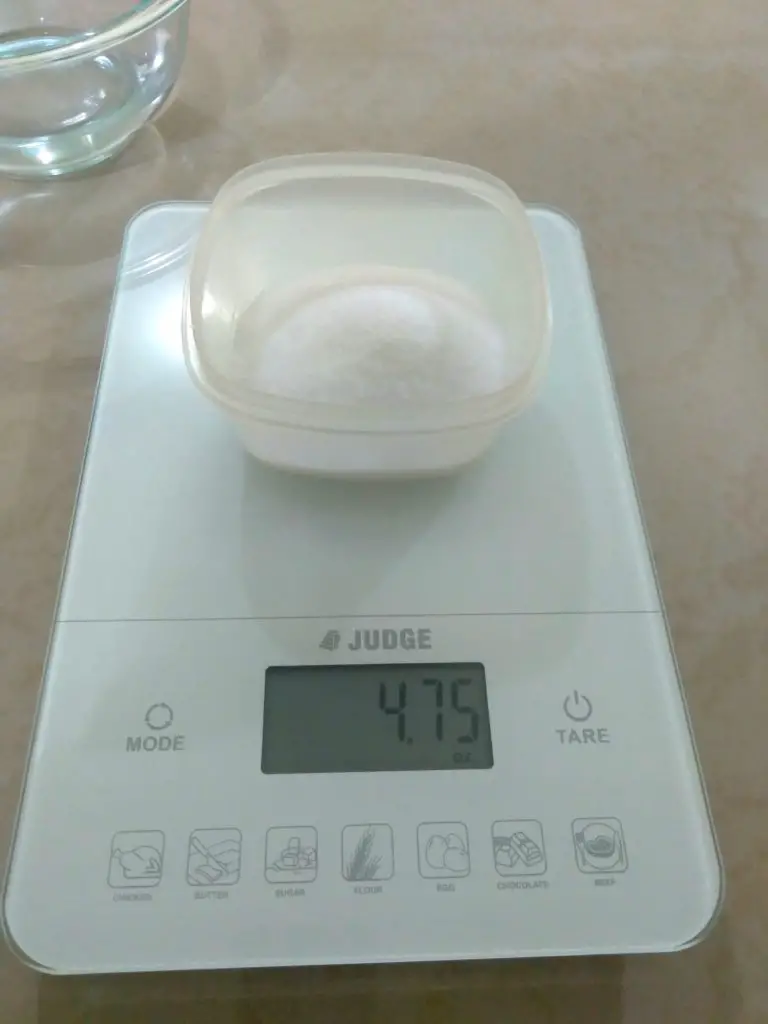
In a well-ventilated area, add the sodium hydroxide to the water and stir to dissolve completely being careful not to inhale the fumes that are produced.
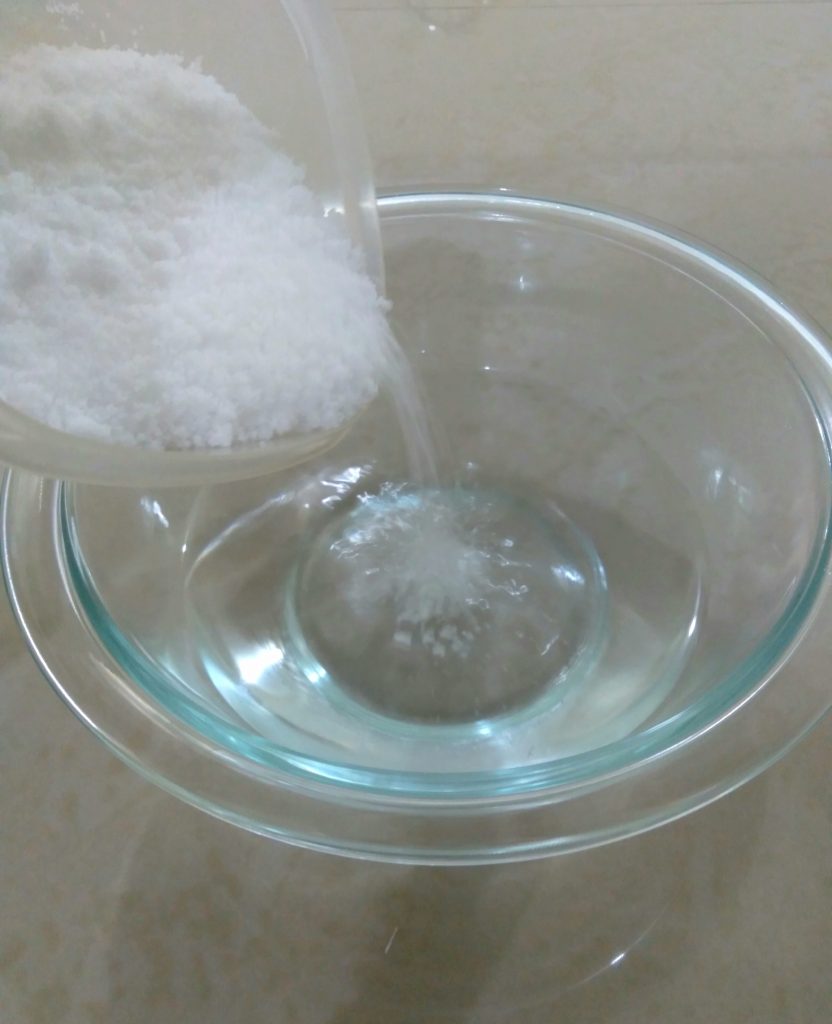
Set the lye solution aside in a safe place where it will not be disturbed and allow it to cool.
Next, prepare the cucumber and aloe vera juice.
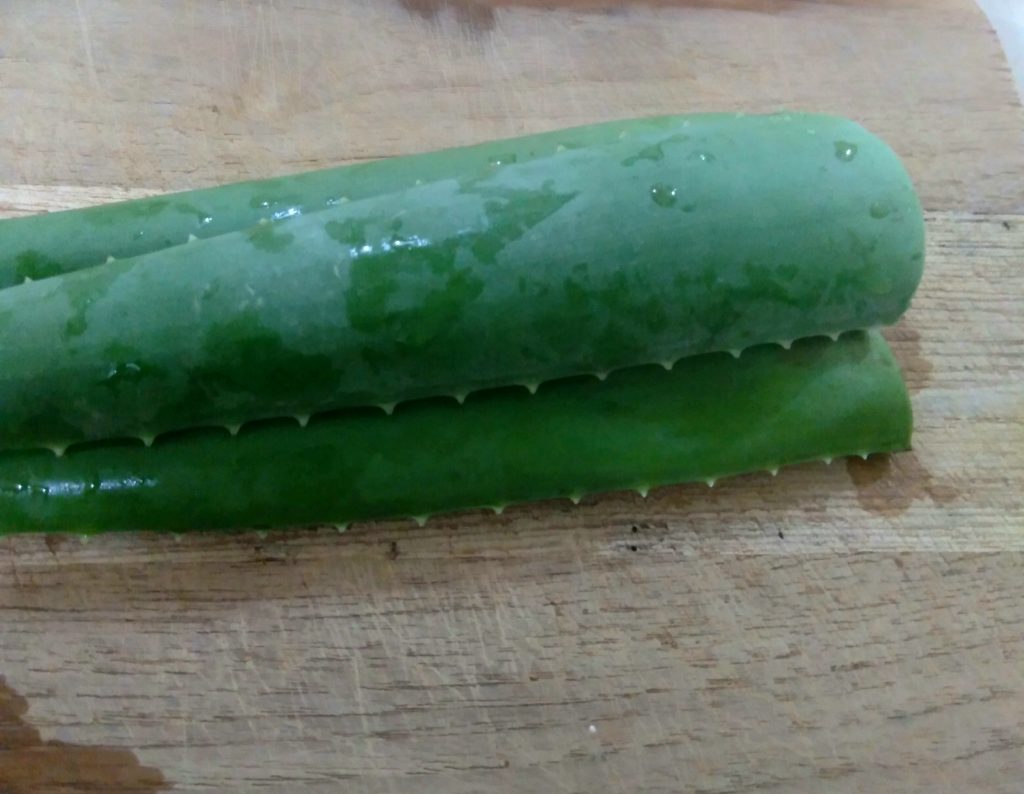
Using a knife, peel away the skin (or rind) from the flesh of the aloe vera. Put it in a food processor and puree it to a fine gel consistency. Run it through a strainer to remove any larger pieces and set it aside.
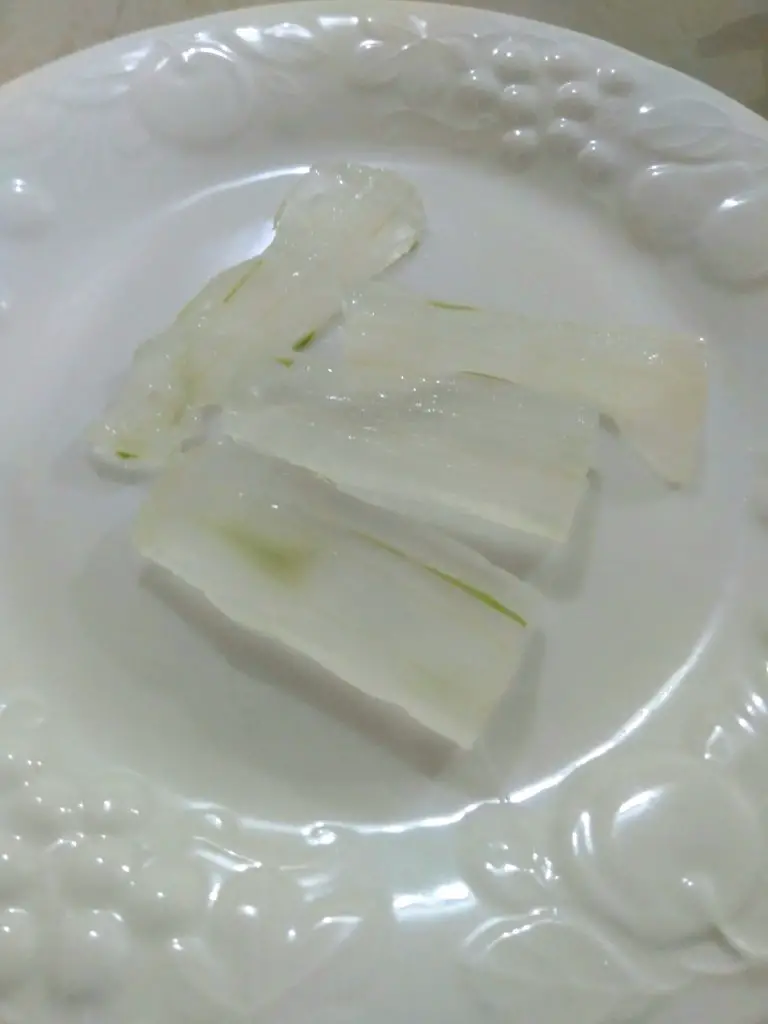
It is not necessary to remove the skin of the cucumber. Cut the cucumber into chunks for ease of chopping with the food processor. Once it is finely chopped, run it through the sieve and squeeze the juice from the fibers.
Weigh out 2 ounces each of the aloe and cucumber juices.


At this point, combine both juices and set aside.
Prepare oils and butters.
Weigh your shea and cocoa butter in a heat-proof container.
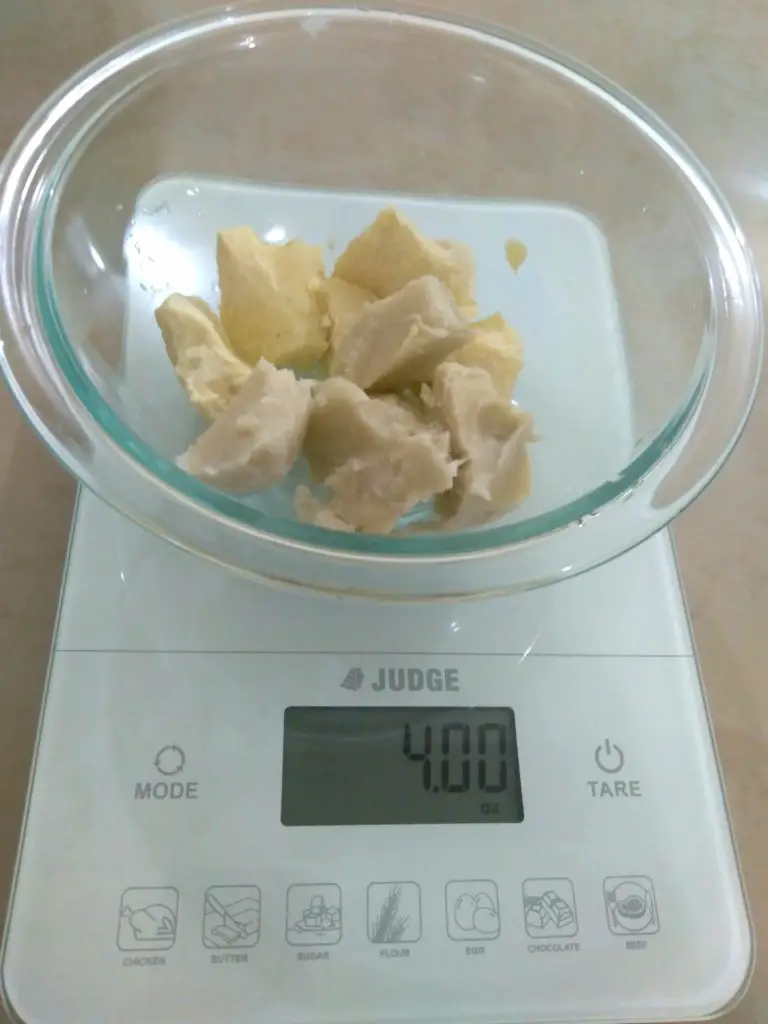
In the microwave or a double boiler melt the butters, only until melted, and do not overheat.

Weigh the individual oils and place them into the mixing bowl.
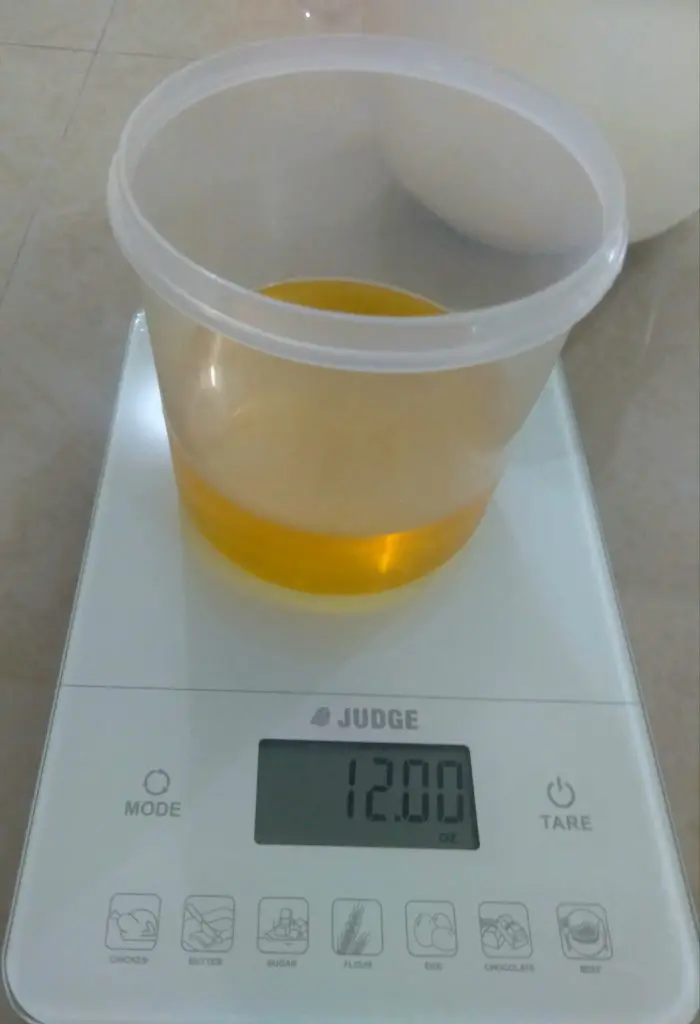
Add the melted butters to the oils in the mixing bowl.
Next, gather your lye, aloe, cucumber juice, fragrance (if used) and have your mold nearby.
Now we are ready to make the soap.
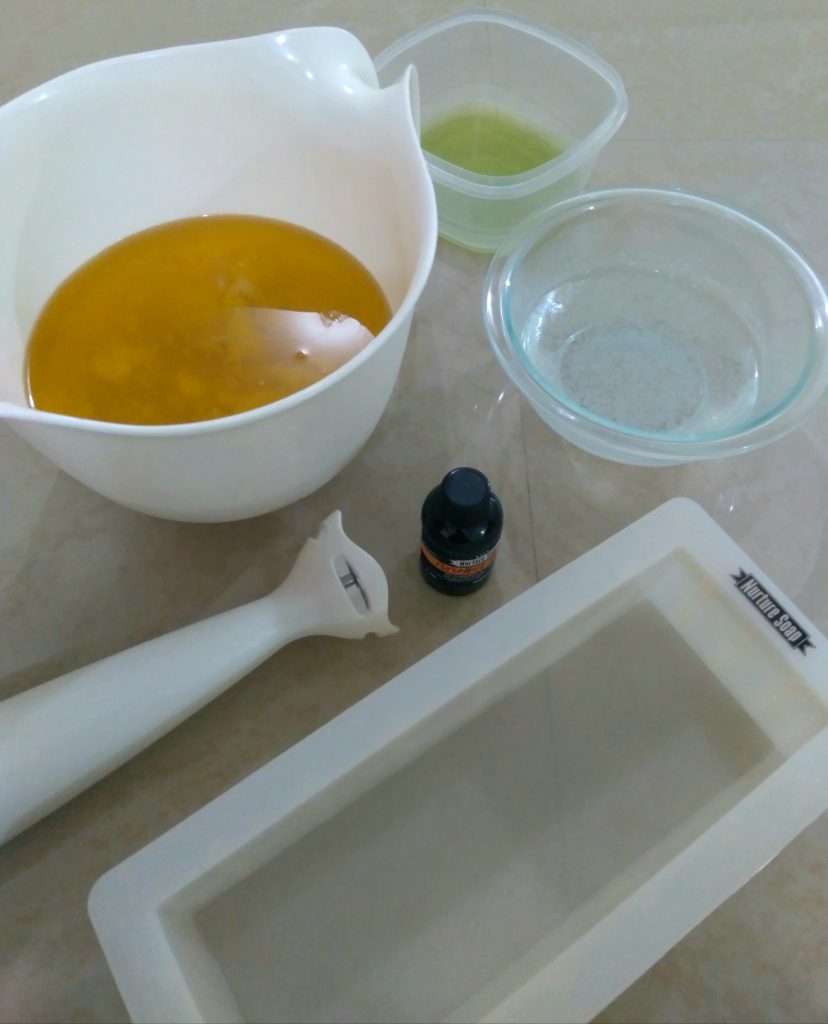
Carefully add the lye to the mixing bowl with the butters and oils.
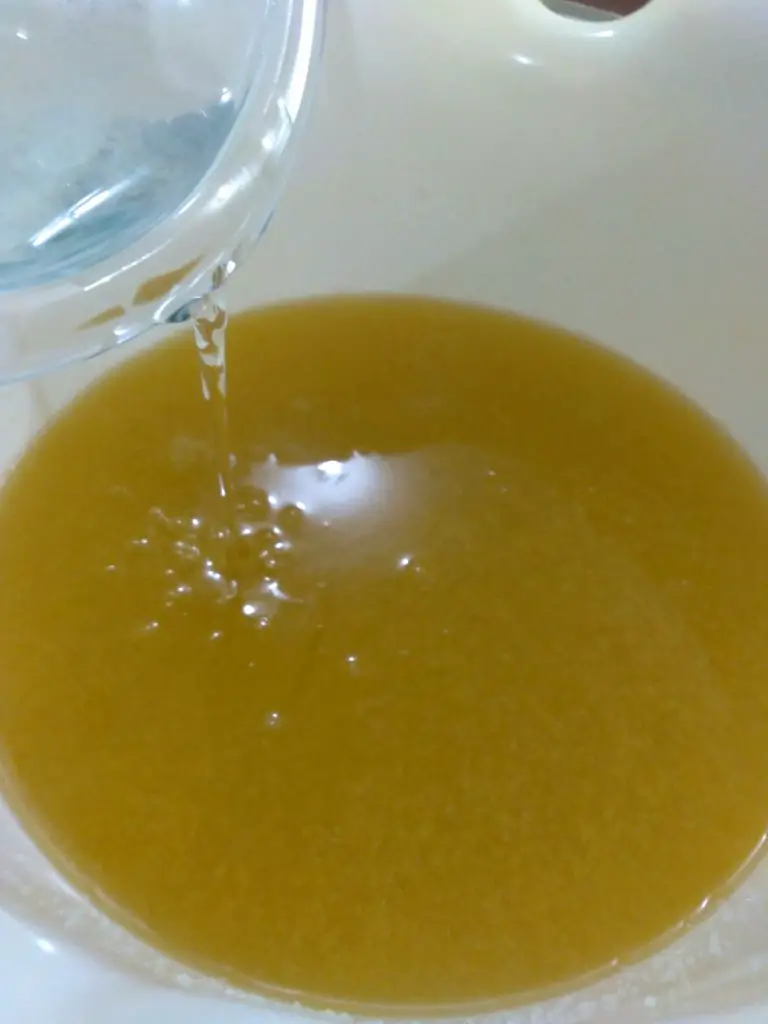
Using an immersion blender, bring the mixture to trace.
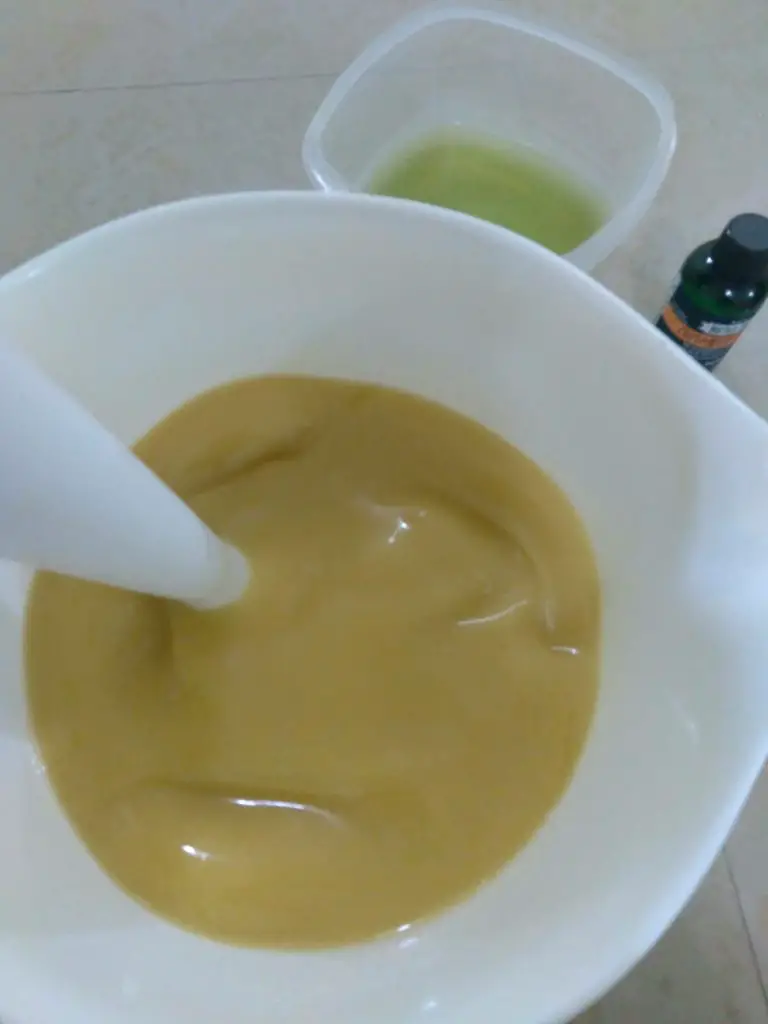
At trace, add the cucumber and aloe juice as well as the fragrance or essential oil.
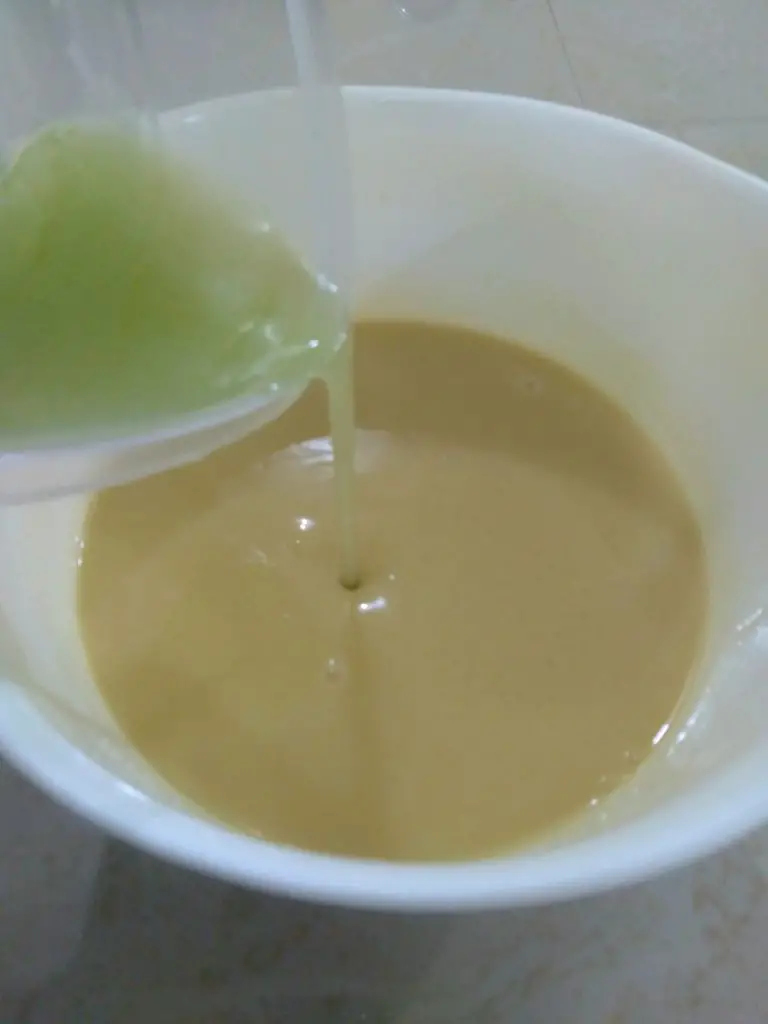
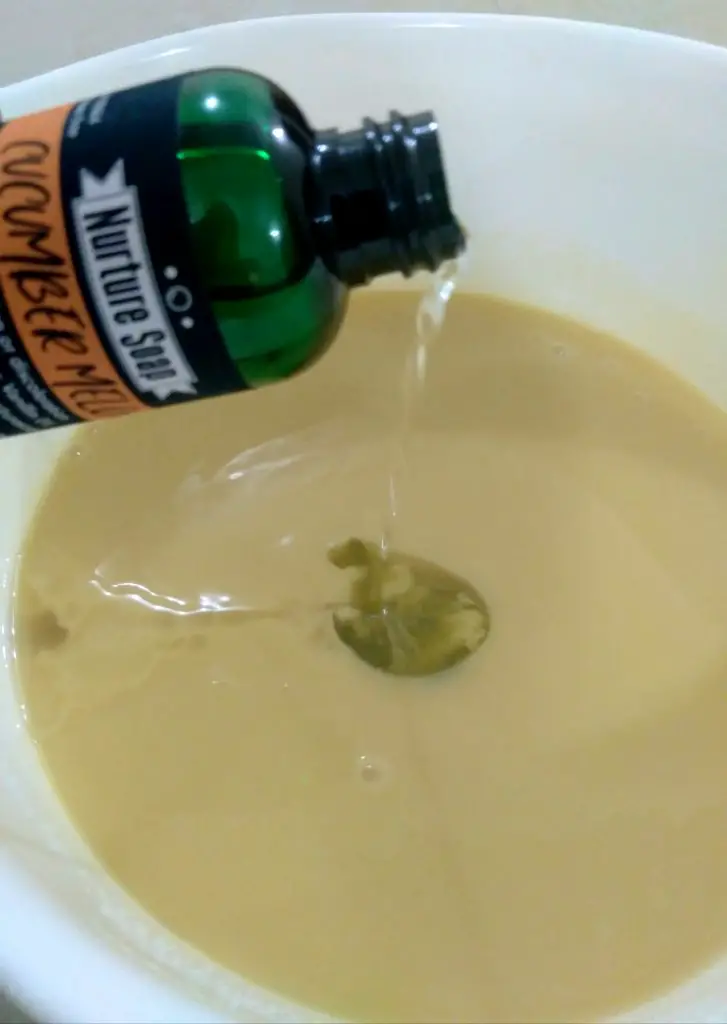
Note, I just eyeballed the necessary amount of fragrance from the bottle which contained 2oz of fragrance oil.
Blend the soap batter to mix everything together.

Pour the soap into the mold and put it aside to set for 24 hours. I textured the top with the back of a stainless steel spoon, but feel free to do your own thing.
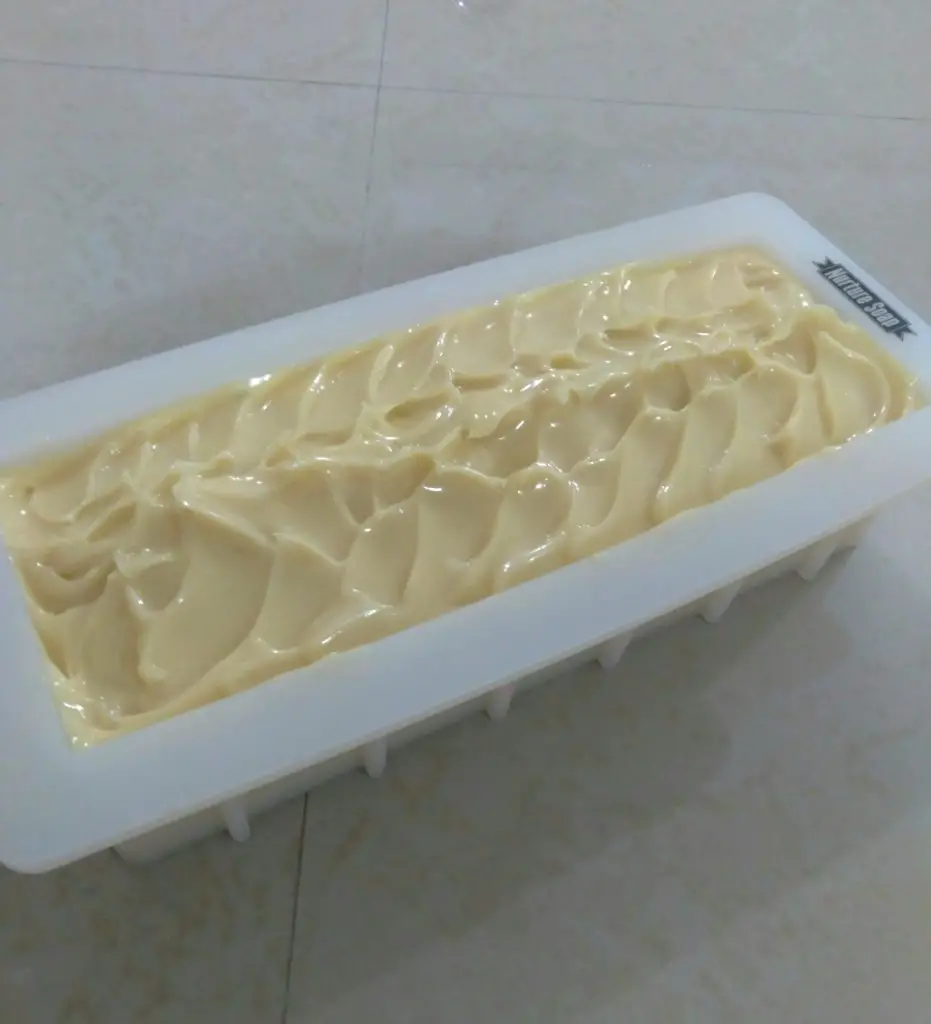
When the soap is firm enough, take it out of the mold and cut it into bars.
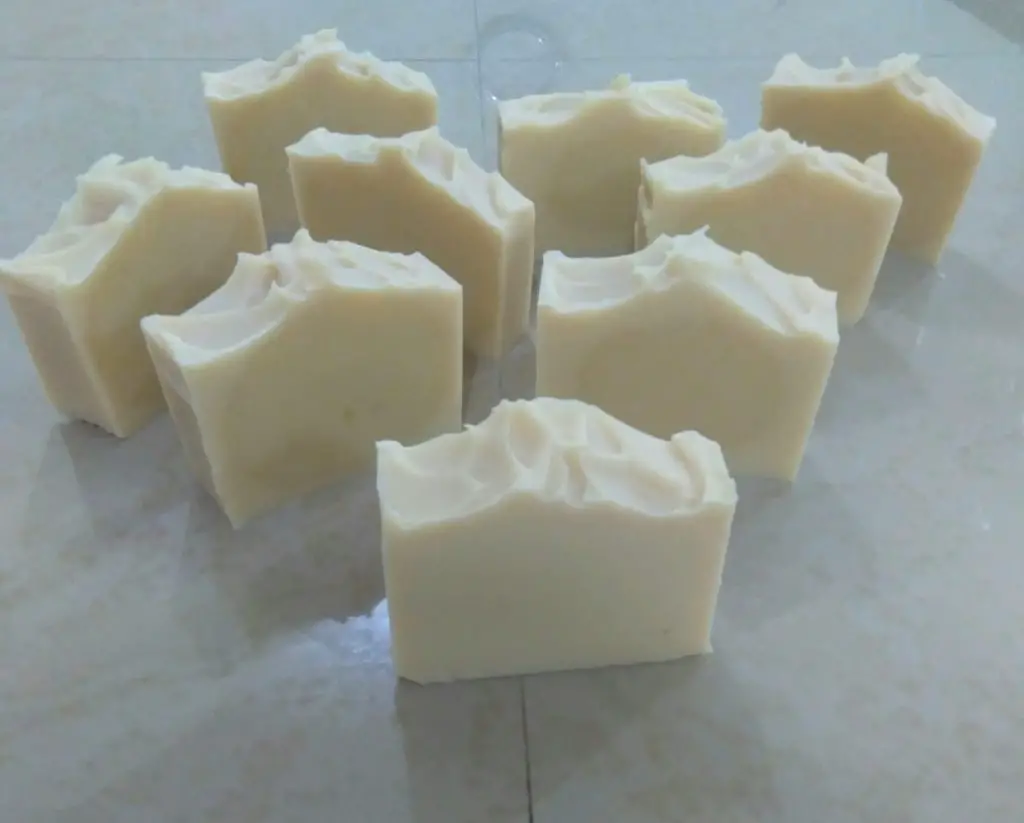
Allow the soap to rest in a ventilated area to cure for a period of 4 to 6 weeks.
At the end of the cure, enjoy the soothing creaminess of your aloe vera and cucumber handmade soap.
Happy soaping!!! 🙂
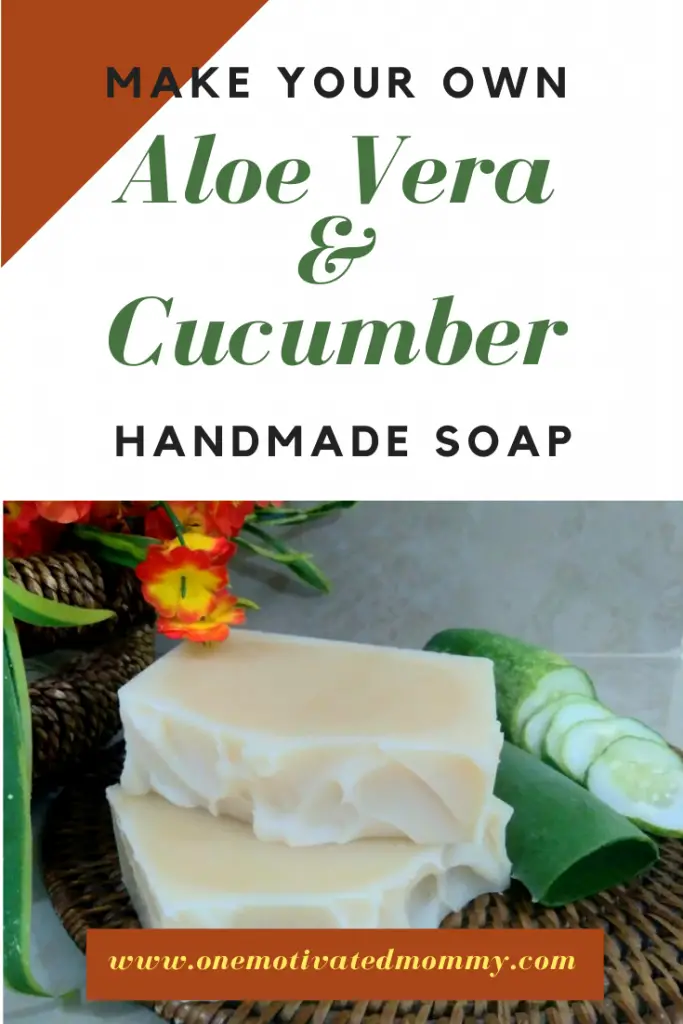

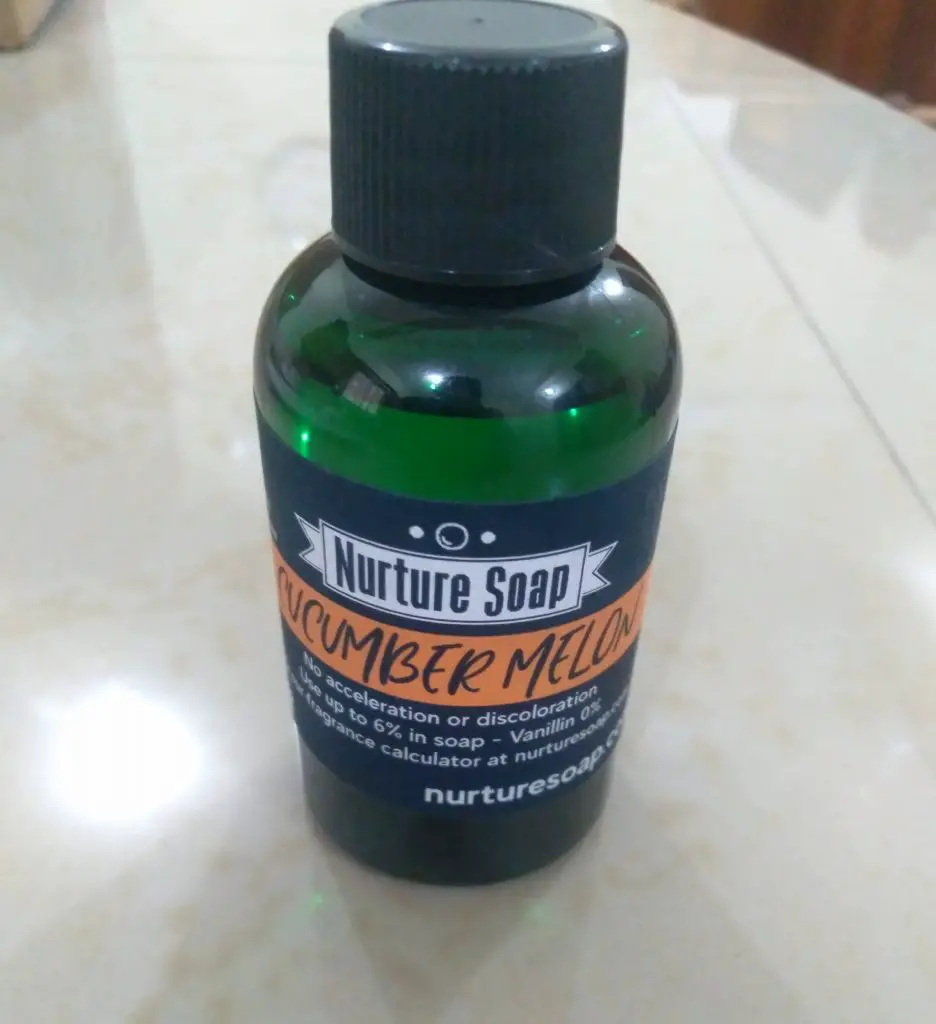
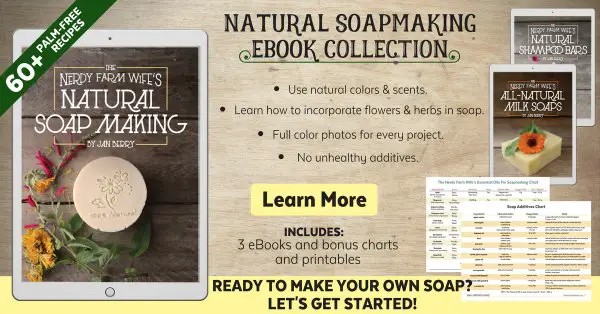
Very simple. Thanks for sharing.
You are very welcome.
Hi there I am interested in making this recipe. I would like to use all the ingredients you used in this recipe but also add avocados. How many ounce of avocado would I need and will the amount of oil or butter change in this recipe ifor i added avocados?
I would add 1 ounce of avocado puree to a batch this size. If you use any water to create the puree you would have to discount it from the water in the recipe. Ensure that your final soap has no lumps of avocado as this can cause mold to develop. Also, this recipe has a 5% superfat and the oils in the avocado would contribute to the superfat of the soap but not by much. If this is a concern, you can run the recipe through a soap calculator and reduce the superfat to 3% or 4% to recalculate the amount of sodium hydroxide needed.
Can I substitute 100% Aloe Vera juice (store bought) for the all of the water in this recipe?
Thank you
Hi Denise,
You can use 100% Aloe Vera juice just ensure that it is from a reputable supplier as some tend to contain thickeners, preservatives and other ingredients which may interfere with the saponification of the sodium hydroxide (alkali) in the soap.
As far as possible, I would recommend using natural aloe from the plant or if not, you may be able to use desiccated aloe vera such as this one, increasing the water after running it through a lye calculator and adding the dried aloe to the oils. Hope that helps.
Hello, just wanted to know can you use 100% aloe vera gel instead of the juice from the aloe vera?
Hi, Crystal.
Yes, you may!
can I substitute another oil instead of using the palm oil?
Hi Connie. Yes, you can use tallow or Bassabu oil to replace the palm oil. Alternatively you can leave it out completely and increase the amounts of coconut and/or olive oil in this recipe (I would add 4oz of each to replace the palm). Use a soap calculator to input the recipe with any new oil replacements to get your desired hardness, conditioning etc. and adjust the sodium hydroxide for the new measurements. If you have any other questions, let me know.